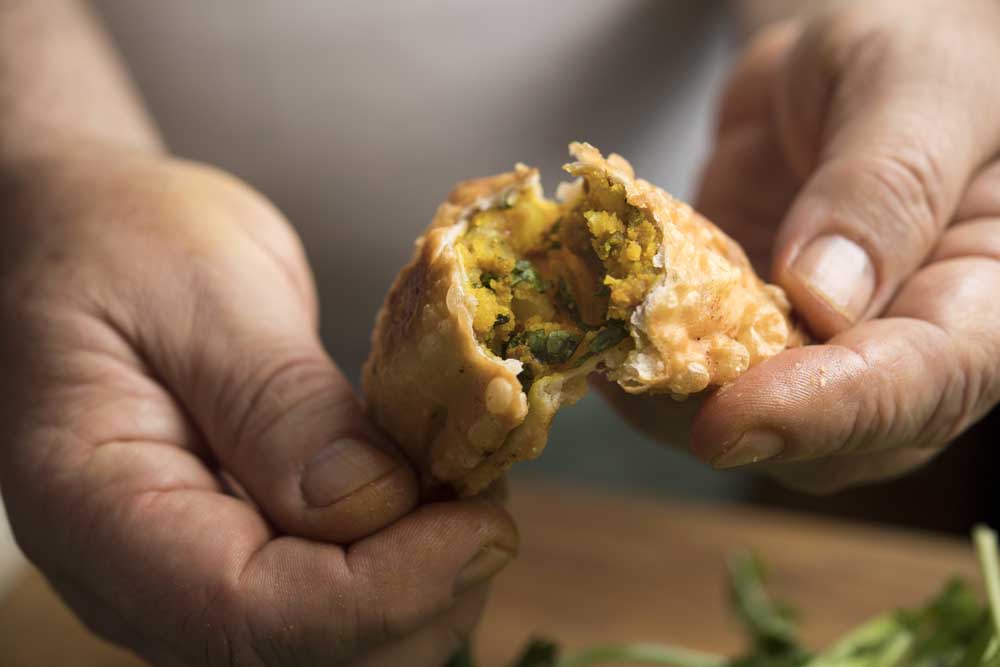Potato samosas, long a street food, find a place in your kitchen
Published 12:00 am Tuesday, November 1, 2016

- The savory filling of a Pakistani potato samosa, after pan frying in oil.Evan Sung / The New York Times
Suppose there was a deli in Lower Manhattan that specialized in halal food, mostly the Pakistani kind. And let’s say this place also sold absolutely delicious, well-seasoned samosas for a pittance. And the place was really close to your house, a constant temptation but a kind of comfort, too.
Would you want the whole world to know about it, and lines out the door and all that? Neither would I. Thank you for understanding.
Trending
Really, the best samosas are made at home, though, and that information I’ll gladly share. I have been practicing.
It occurred to me that it may be wise to invest a little time learning how to make samosas myself. I wanted to be sure, in case of emergency or sudden shortage (if I moved to a different neighborhood, for instance), to possess the knowledge.
Essentially, samosas are little savory pies, cousins of empanadas and pasties and other hand-held dough-wrapped morsels. Samosas, usually highly spiced, are wildly popular snacks in Pakistan and India (and throughout much of the rest of the world), where these delicious fried parcels are sold on the street.
They can have all sorts of fillings: meat, fish, vegetables, chickpeas and lentils. My recipe aims to re-create the New York-Pakistani version.
My two cents: Potato samosas are by far the way to go, but then I have always been a fan of the humble potato. You can infuse potatoes with a lot of flavor — onion, garlic, ginger, turmeric, hot chilies — and the tartness of lemon juice, it turns out, is a most welcome addition. Experimenting with a few versions, I soon began to appreciate this winning combination of spice, hot pepper and acid.
With a little practice, you can master the samosa technique. Roll a small piece of dough into a circle and cut the circle in half. (Each piece of dough makes two samosas.) Fold the dough into a cone shape and add the filling, pinching the edges carefully to seal.
Trending
To fry the samosas, rather than heat a large amount of oil, use a wok, which can easily hold a 2-inch pool of oil, and then fry only three or four at time. If you are well organized, you can easily form a few more samosas while one batch is cooking.
While samosas are typically served hot, with some spicy chutney on the side, I find them just as delicious plain, at room temperature. And though sometimes a samosa is big enough to qualify as lunch, I prefer to make small ones.
If it all sounds like too much of a project, know this: The extraordinary potato filling is also extremely satisfying served on its own, as a side dish.








